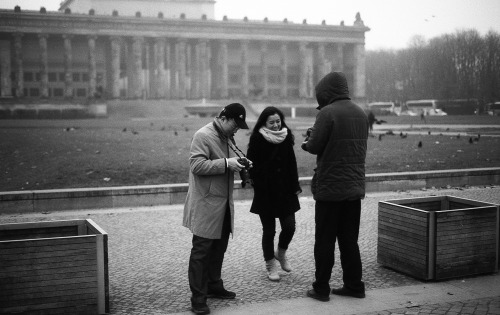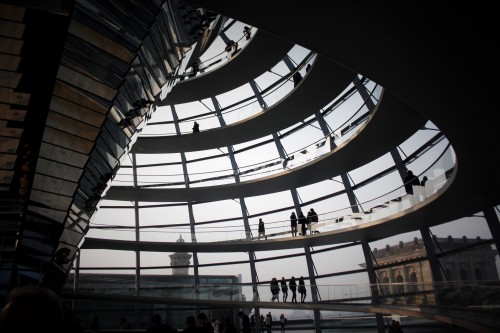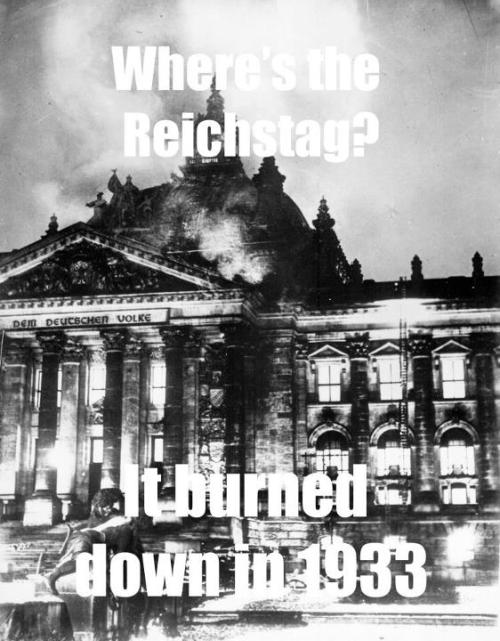#reichstag
©Burnéd Shoés, 2011, Reichstag, Berlin
Look what I just found – tidying up the office brings out surprises from time to time!
Via my personal photography blog burnedshoesphotography!
[ more on: Website | Facebook | Pinterest | Google+ | GraphicDesign ]
Post link
TheReichstag fire was an arson attack on the Reichstag building (German parliament) in Berlin on February 27, 1933. The Nazis stated that Marinus van der Lubbe, a young Dutch council communist, had been caught at the scene of the fire, and he was arrested for the crime. Van der Lubbe was an unemployed bricklayer who had recently arrived in Germany. The Nazis stated that van der Lubbe had declared that he had started the fire. Van der Lubbe was tried and sentenced to death. The fire was used as evidence by the Nazi Party that communists were plotting against the German government. The event is seen as pivotal in the establishment of Nazi Germany.
Adolf Hitler, who had been sworn in as Chancellor of Germany on January 30, urged President Paul von Hindenburg (President of the Weimar Republic) to pass an emergency decree, the Reichstag Fire Decree, to suspend civil liberties in order to counter the ruthless confrontation of the Communist Party of Germany; under the decree, most civil liberties in Germany, including habeas corpus, freedom of expression, freedom of the press, the right of free association and public assembly, and the secrecy of the post and telephone were suspended and were never again renewed under the Nazi regime.
After passing the decree, the government instituted mass arrests of communists, including all of the Communist Party parliamentary delegates. With their bitter rival communists gone and their seats empty, the Nazi Party went from being a plurality party to the majority, thus enabling Hitler to consolidate his power through the passage of the Enabling Act, a special law that gave the Chancellor the power to pass laws by decree, without the involvement of the Reichstag; the Nazis devised the Enabling Act to gain complete political power without the need of the support of a majority in the Reichstag and without the need to bargain with their coalition partners.
The measure went into force on March 27, 1933, and, in effect, made Hitler dictator of Germany. [x]
Post link
February 27th 1933: Reichstag fire
On this day in 1933, the Reichstag building in Berlin, which housed the German Parliament, was set on fire. The Nazi government of Adolf Hitler then ordered a thorough hunt to track down the arsonist. The police identified the perpetrator as Marinus van der Lubbe, a Dutch communist; he and four other Communist leaders were arrested for their supposed role in the blaze. The Nazis used the event as evidence of a Communist plot in Germany, and Hitler urged President Hindenburg to pass an emergency decree to counter the Communist threat. This Reichstag Fire Decree gave Hitler considerable powers, and is considered a pivotal moment in Hitler’s consolidation of power into a one-party dictatorship. Van der Lubbe was found guilty and executed by guillotine on January 10th 1934. However, his role has been questioned by historians with some even suggesting he was not responsible and that the fire was ordered by the Nazis themselves.
Post link









